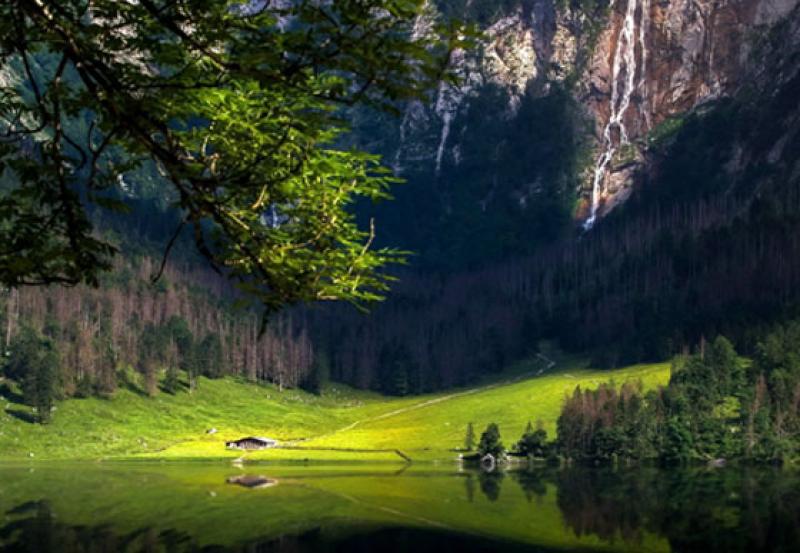
Bavaria: The Culture State of Germany
By Ryan Merrifield
The Free State is located in the southeast of Germany, and is the largest by area. The autonomous state is deeply steeped in a culture of tradition and heritage, where most of the inhabitants call themselves Bavarian first and German second. Diversity, in both culture and history, is synonymous with the state which is largely dominated by the beautiful Bavarian Alps abundant with wildlife and glistening glacial lakes. Visitors can experience the air of welcoming and belonging through the famous Romantic Walk, marvelling at the timeless and picturesque medieval towns, or take a tour of the idyllic Romanesque castles draped in thick, snow-tipped meadows. From land rich in natural beauty and spectacular architecture, to a vast, diverse culture and history, it would be underwhelming to say Bavaria is a must-see destination.
A Fairytale History
Early evidence from as far back as the 6th Century suggests of a duchy existing in Bavaria. Over the centuries the kingdom experienced numerous separations until it was officially proclaimed as a kingdom in the early 19th Century. During the reign of King Ludwig II, the iconic “Fairytale King” – who was famed for building the dramatic Neuschwanstein Castle which inspired the setting for Sleeping Beauty – Bavaria was absorbed into the German Empire in 1871. After becoming a Free State in 1918 and subsequently losing its independence under the National Socialists from 1933-1945, Bavaria became a Free State again following the constitution of 1946. The landmarks of history can be found deeply steeped in the plethora of architectural masterpieces dotted around the state – from mighty neo-French Rococo style castles such as the Linderhof Castle, to the beautifully atmospheric Baroque style palace, the Residenz.
Culture
Bavaria is strikingly different to the rest of Germany in its culture practices. The people are more in tune with their heritage and roots, with emphasis on taking pride in the range of traditions ripe in the region. At the heart of this is the Bavarian Tracht – meaning “costume” in High German. Lederhosen for men and Dirndl for women, the traditional clothing is usually worn for special events, and are popular for countryside weddings, the May pole celebrations and festivals. The dress is at the forefront for the lively folklore activities that look to preserve regional distinctions in the state. A calm walk along the Romantic Road full of charming historical sites which ooze with style and splendour is a decadent yet inspiring insight into the cultural powerhouse.
Music
Steeped in musical and artistic excellence is the National Theatre, Munich. Performances of classical and contemporary inception are played regularly in this grand, Neoclassical style venue. The performances culminate in the Munich Opera Festival which runs from June to late July, featuring internationally acclaimed artists and composers playing timeless masterpieces. In the north of the region, the Bayreuth Festival which runs from late July to late August, commemorates the works of Bavarian composer Richard Wagner. There’s no better experience than hearing the Die Walküre(Ride of the Valkyries) resonate through the beautiful vineyards of Franconia. But it is of the iconic folk music that really captures both the culture and the history of the state. Music in the region has evolved so much over the years that folk music on the 21st Century would be not be seen the same as folk music in the 18th Century. In order to maintain strong ties to tradition yet evolve with the modern world, music forms such as yodeling have undergone fusions with other genres and foreign styles.
Cuisine
Bavarian cuisine is best described as a fusion of regional, authentic delicacies with modern creations of beautiful presentation. Pork has always been an integral part of Bavarian cuisine, of which is steeped in regal heritage; roast pork was the dish of royalty. A mark of artistic excellence is the authentic presentation of the Bavarian crème. Egg whites are whipped with vanilla and bound with gelatine – the indulgent dessert is then sculpted high creating beautiful structures. Top-class wines with a distinctive dry, fruity flavour are found in the 6,000 hectares of picturesque vineyards that is the Franconian wine region. A fusion of medieval towns, lush seas of meadows , and a Mediterranean climate with a centuries – old tradition of wine-making welcomes visitors to this region once a favourite of Goethe.
Gemütlichkeit
With all things considered, the cultural powerhouse is perfectly encapsulated by this untranslatable proverb. It is more of a concept or philosophy that is ripe within the state; a cosiness and a warming, inviting atmosphere. Visitors can sample the brilliance the state has to offer, whether it be a mug of the world famous beer in a beer garden, a sight-seeing trip to Munich, or a glass of locally sourced wine by the fire in a rustic hotel; Bavaria is as luxurious as it is mystical.
Share this article:



















